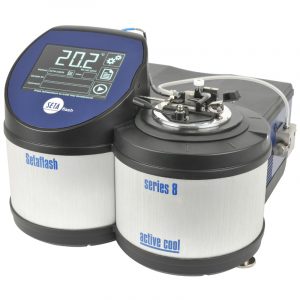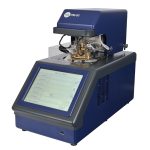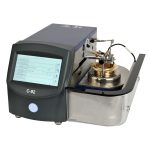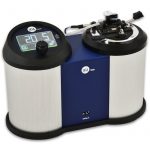Choosing my flash point tester
Flash point is measured using either an open cup or closed cup flash point tester. Open cup tests are required in some specifications and regulations, and are intended to mimic conditions in open spaces, whereas closed cup tests are closer to most situations, where space is restricted.
Closed Cup (CC)
Pensky-Martens, Tag, Setaflash (CC)
Closed cup tests aim to simulate a liquid in a closed or semi closed contained environment. If the liquid is at, or above its flash point, a fire or explosion is a risk when exposed to a potential ignition.
The vast majority of regulations specify the use of a closed cup flash point tester due to its better precision and ability to detect contaminants.
Test Methodology
 Non-equilibrium – Pensky-Martens, Tag, Cleveland
Non-equilibrium – Pensky-Martens, Tag, Cleveland
Non-equilibrium refers to a flash point test where the liquid is heated at a steady rate of temperature increase while the ignition source is applied at regular intervals. The term non-equilibrium means the vapour is not in equilibrium with the liquid.
Advantages: It is a universally standardised test well suited to automation.
Disadvantages: Potential loss of components able to escape each time the flame is dipped, the difference in temperature between the liquid sample and the vapours which can be quite significant and finally the required sample size of 50 to 80 ml per test.
Open Cup (OC)
Cleveland, Setaflash (OC)
Open cup tests simulate the potential ignition of a liquid spillage in uncontained conditions, for example a pool of liquid spilt on the floor. An open cup instrument will always give a higher flash point than a closed cup as the open cup allows loss of vapours to the atmosphere above the cup and the sample is more susceptible to the conditions in the laboratory.
Fire point, combustibility and sustained burning tests all use open cup instruments. Fire point is the lowest temperature of the liquid at which vapour combustion and burning commences when an ignition source is supplied. Combustibility and sustained burning tests are usually carried out a fixed temperature and test for the continuous burning of the test specimen.

Equilibrium – Setaflash
Equilibrium refers to a flash point test in which the liquid sample in the cup and its vapours have the same temperature. Traditionally a complex procedure, the Setaflash small scale method has overcome this by using a small 2 or 4 ml sample which achieves a ‘rapid equilibrium’ in just 1 or 2 minutes.
Advantages: A fully compliant rapid test with improved precision at low cost which is widely used by many industries.
Disadvantages: Traditional testers can involve a laborious process especially when larger amounts of sample are needed to produce a representative sample.
Ramp mode
Ramp mode partially automates the process of flash point determination, reducing the time taken to find the flash point of a sample. The instrument heats the sample cup at a fixed ramp rate and prompts you to dip at specific intervals until a flash occurs or the cup temperature reaches the end of the test range. You use the same sample for the duration of the ramp test.